The Thrill that Comes From the Unknown
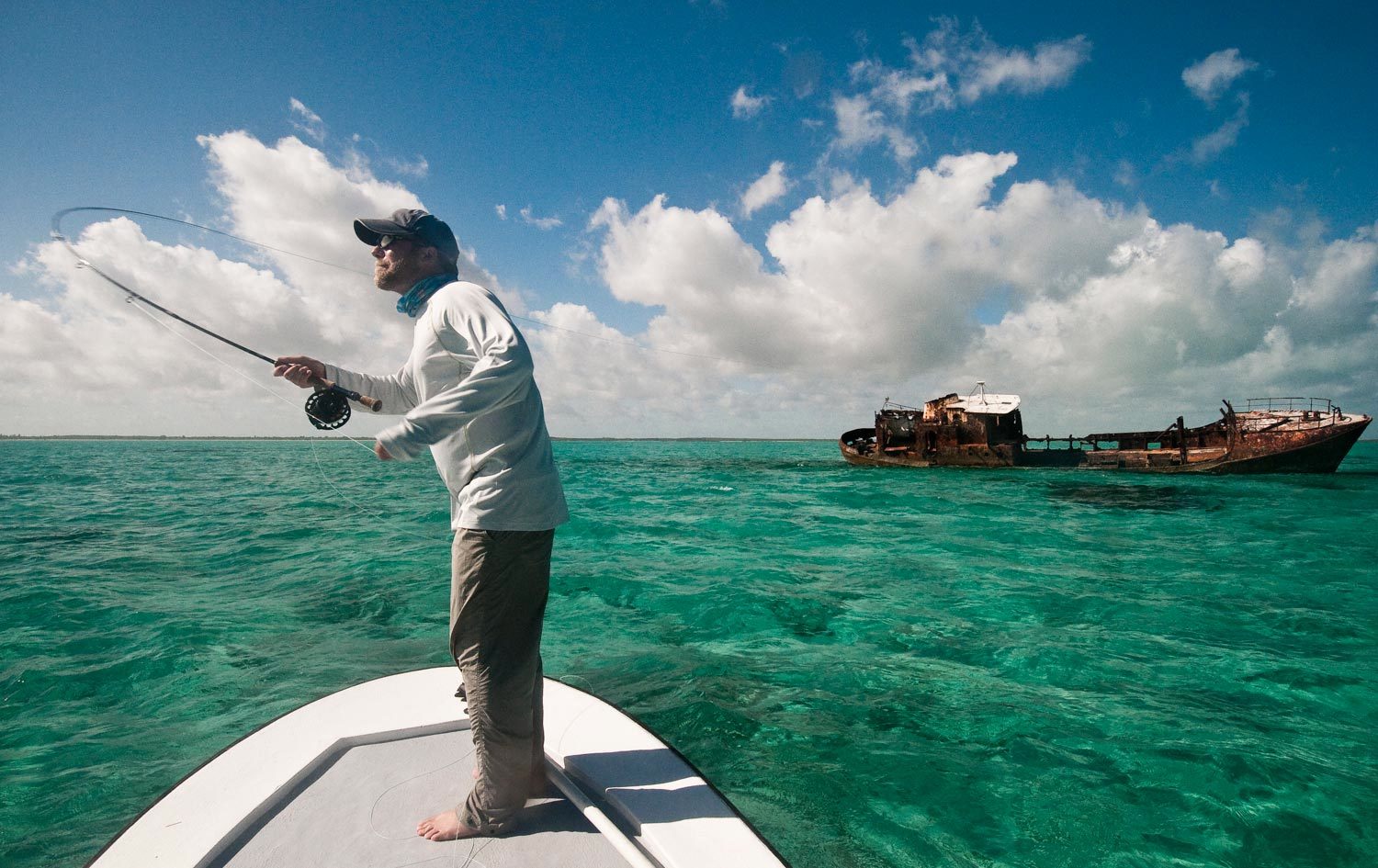
If you ask me, I think the surprise factor in fly fishing is underrated.
Most of us choose to spend our time preparing and planning out every single detail of our fly fishing trips, so we can eliminate it. We spend hours tying recommended flies, we go threw our gear with a fine tooth comb checking for imperfections, and we research everything we can about the water and species we’ll be tackling. We do this because we want to feel in control. Furthermore, we do it because we want to catch fish. Problem is, fly fishing isn’t all about trying to squeeze out every bit of success we can muster out of a day on the water. A big part of fly fishing for me is letting go and
Read More »Tell the Story With Fewer Photos
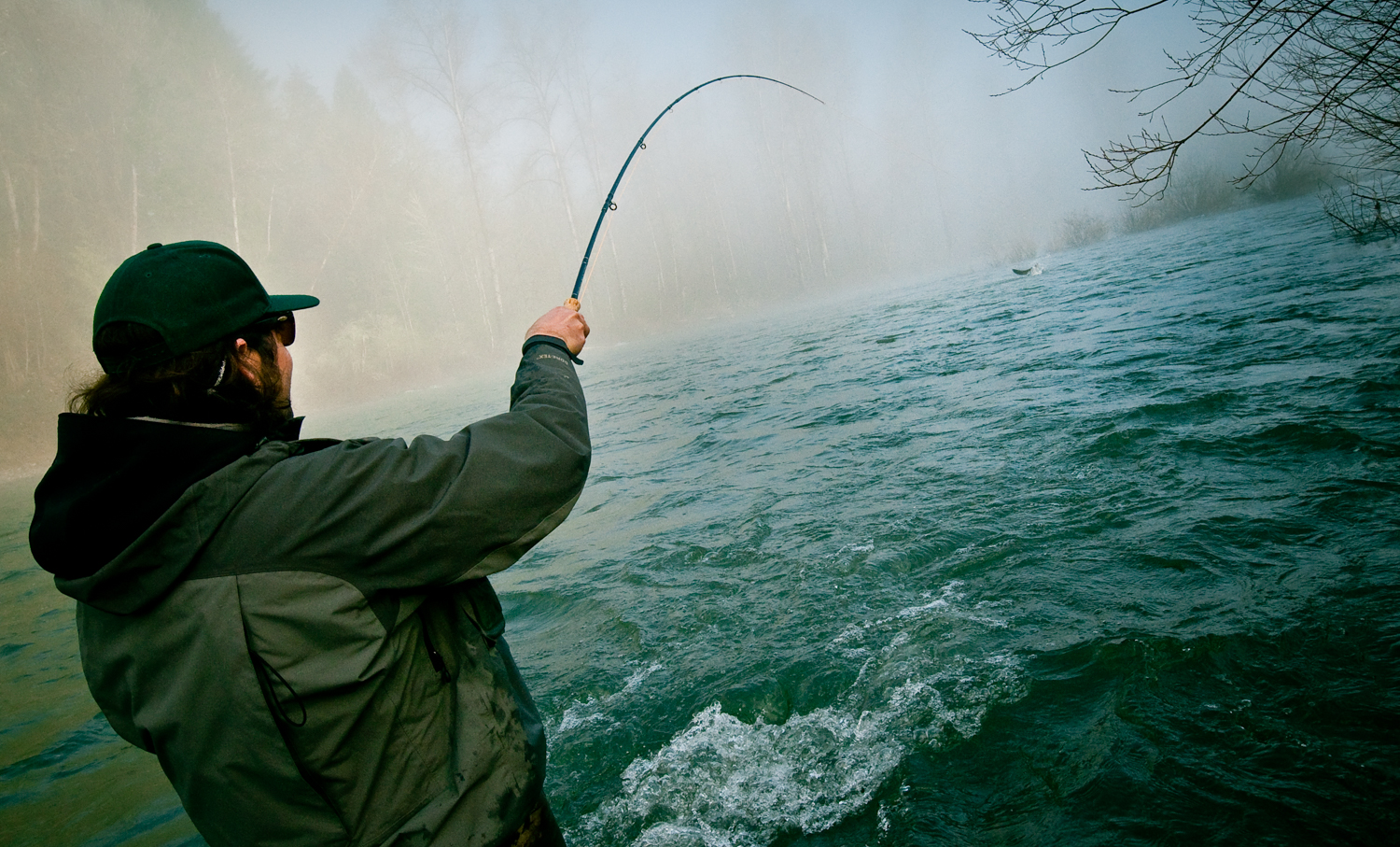
This is the easiest way I know to become a better photographer.
It’s been a while since I posted a photography tip, but this is a good one. I had a conversation the other day that made me think about photographic storytelling. I took a really nice photo of a friend with a big fish. In the process I actually shot about fifty photos. That’s easy to do in eight frame per second bursts. Of course, everyone is excited about having a photo of themselves holding a nice fish. In his excitement my buddy told me,
“Send me everything!”
“Ok,” I replied. “Which shots do you want? The ones that make the fish look small or the ones that make you look bad?”
He immediately realized it was a silly request. The point of fishing with a professional photographer is not to tell him how to do his job.
One of the first things I learned as a photographer was that the best way to take a good photo is to take a lot of photos. That doesn’t mean that you show a lot of photos. Each photo of any given event creates its own unique reality for that event. That’s the nature of freezing a moment in time. Every moment is unique. Since the photographer, whether they realize it or not, always has their own interpretation of that event it is generally best represented by one, or at most, a few images.
It’s a common flaw in new photographers to be enamored with the process and want to share every image with anyone who will take the time to look. What the photographer doesn’t realize is
Read More »Better Fly Rod Grip For Better Casting: Video
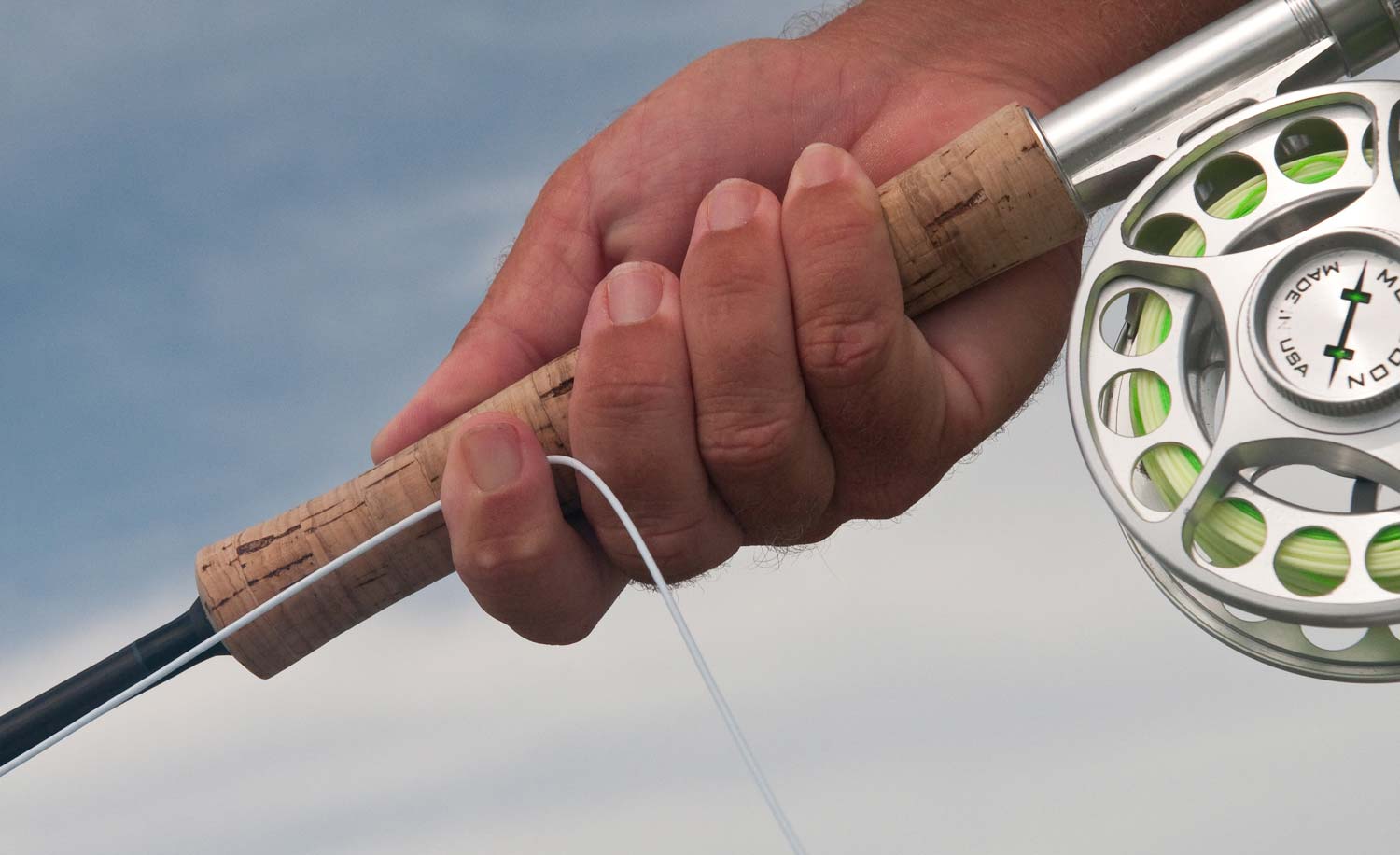
The grip is the most fundamental part of your fly cast.
When I’m helping someone with their casting, their grip is always the first thing I look at. The grip is so basic that many anglers never take time to learn it. A bad grip has effects that ripple out through your casting. Even if you have a good grip, you may be using it wrong. It’s more common than you’d think. In fact, I struggled with it myself for years.
Don’t let your grip slow you down. Take some time to learn the best way to hold the rod and work on it when you practice your casting. It will pay you back in more fish.
WATCH THIS VIDEO TO LEARN THE BEST WAY TO GRIP A FLY ROD.
Read More »Reece’s Clearwater Crawler
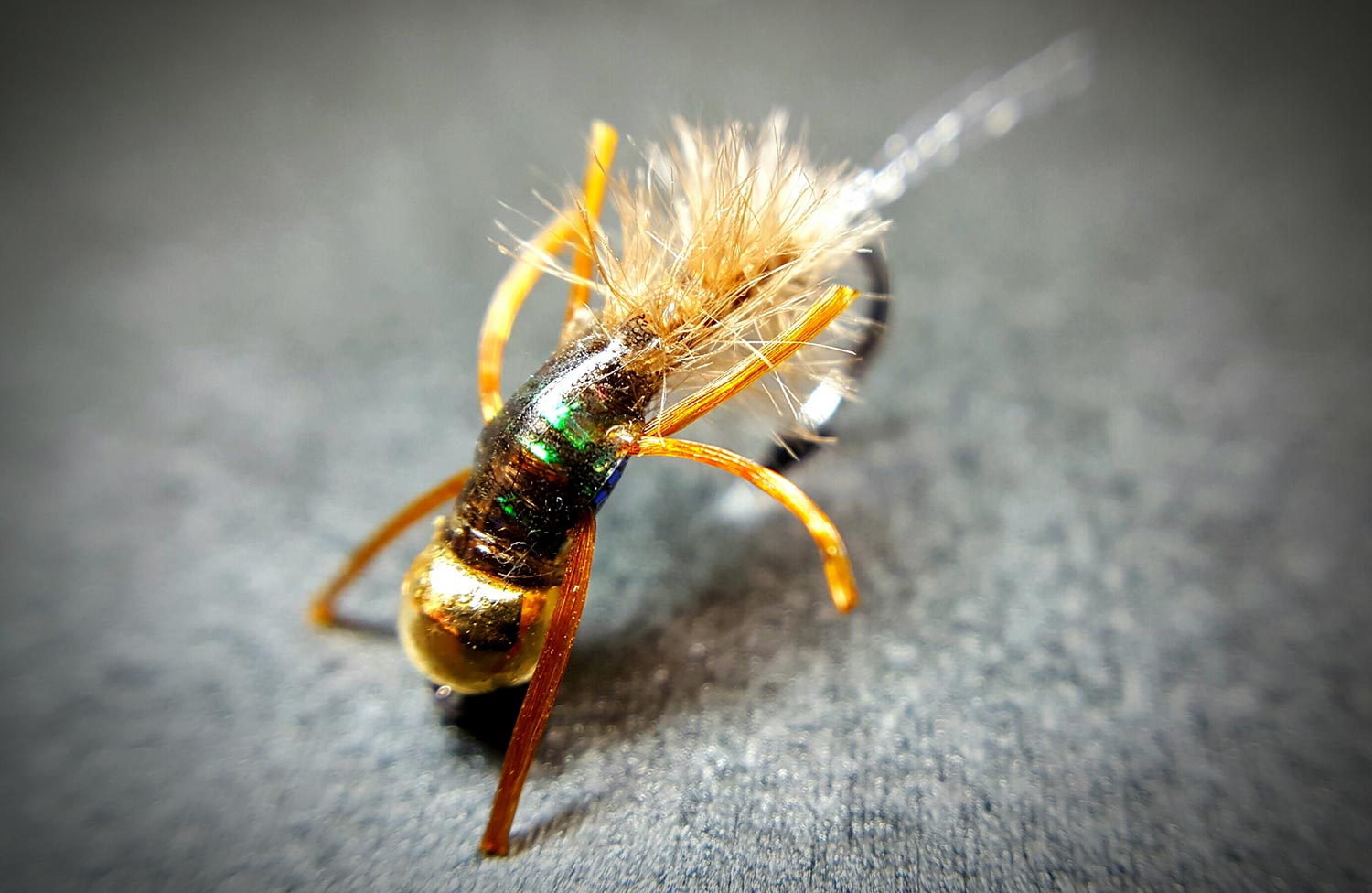
The Clearwater Crawler provides an anatomically accurate imitation of the prevalent gills found on the abdomen of this class of mayfly nymphs.
In addition to this the thorax of this pattern displays a translucent quality seen in the naturals as they carry out their lives on the stream bottom. The reflective base of the thorax displays a trait seen in crawlers on the verge of emergence. The vast majority of nymphs employ dubbing in the thorax of the pattern. This allows them to display reflectivity, or dull mottled coloration but not translucence. My choice of materials and processes allows this pattern to present both of these attributes simultaneously. This vastly increases effectiveness in term of fish brought to net.
During the summer and fall I guide on the freestone portion of the North Platte River. The latter half of our season is usually defined by increasingly low water conditions that result in easily spooked, picky trout. As with the vast majority of free stones, crawler type mayfly nymphs are a common food item for trout in our waters. I needed a crawler nymph pattern that could be carefully analyzed by trout in clear slow water and still be accepted as the real deal. After countless tweaks and changes I found a design that was taken without hesitation. Throughout the second half of summer and into the latest reaches of fall this pattern produces fish as at high level of consistency. The pattern shown in the video is a size 12 which I most commonly use during the summer months. However, as summer fades and fall progresses I drop in size down to the smaller size 16s in this pattern.
HERE’S A VIDEO.
Read More »Cast With A Purpose!
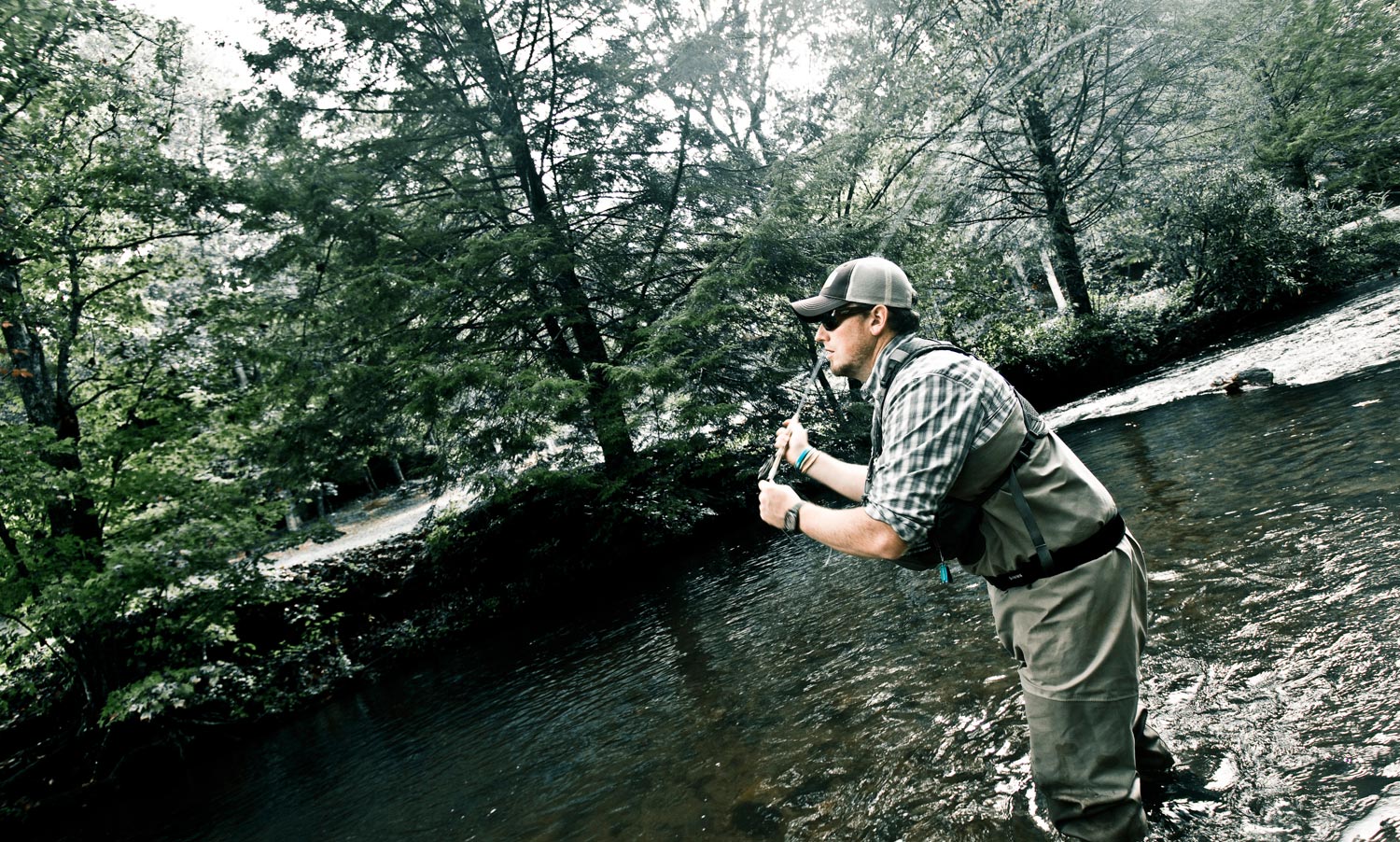
By Justin Pickett
Arguably, the most important aspect of fly fishing is the cast itself.
If you can’t deliver the fly properly, the chances of you hooking up spirals down the toilet. Before taking a client onto the water, my first questions have to do with their fly fishing experience and their casting ability. Ask any saltwater guide what is the most important thing to do before stepping on the bow of their boat and they will tell you, “practice your casting”. So you step out on your front lawn, or maybe head out to a dock at a local lake or pond. You strip off some line and you make some casts, but are you really getting anything out of just making some casts for fifteen minutes? Well, yes and no.
In order to make yourself a better caster and, in turn, be a more successful angler on the water, you must practice with a PURPOSE. Whether you want to practice your distance, accuracy, or casting into the wind, get the most out of your time.
First off, always tie on a piece of yarn at the end of your leader. I use bright pink egg yarn. This will allow you to see what’s happening at the end of your leader. How the fly is landing and where. It really doesn’t do you a whole lot of good to just cast a bare leader.
Set up targets, or use trees, plants, pets, children, trolls, etc., as points of aim. Set them up at different distances so you get used to how far 30-40-50-60-70ft looks, how much line needs to be stripped from the reel, and the timing and technique involved in casting those distances. My Labrador loves chasing my fly line around the yard and that gives me a great opportunity to use her as a moving target. When it comes to saltwater fishing, you’re almost never casting at a fixed target. Instead, you’re often leading a fish or a school of fish with your fly. If you don’t have a kid or a pet, use a jogger as they run by! Their facial expressions are usually worth a pretty good laugh.
Find some wind! Don’t go out a cast on dead calm days. You’ll inevitably end up on the water with 25mph crosswinds that will ruin your day on the water if you’re not prepared for it. If you notice that it’s really windy outside, get your butt up and toss the fly rod around. See what the wind does to your cast and find out what you need to do to present your fly to a target.
Work on your line speed. Speed equals distance, and that means perfecting your double haul. There are numerous drills and techniques that you can practice. Find one that works for you and ingrain it into your casting stroke. Even mess around with your grip. You’d be surprised how your grip can affect the amount of power that can be applied to your casting stroke.
Don’t be a one-trick pony!
Read More »Casting Distance Does Play A Factor In Success

Saltwater fly fishing often calls for long accurate casts for the chance of success, and quite often it holds just as true on your favorite trout streams. Of the countless hours I’ve spent guiding my trout clients the past ten years, I’ve witnessed over and over again, how important just a couple more feet of distance can be in getting a trout to eat. You just can’t always approach a hole and make a routine short cast. Often no matter how stealthy you are, you’ll spook the fish if you try getting closer. Occasionally, obstacles such as low hanging trees can make it impossible to get the proper casting angle unless your standing farther away. Other times you may run into a situation where different current speeds between you and your target require a longer cast to get an adequate drag free drift. That’s why it’s so important for fly anglers to get comfortable making above average casts. I’m not saying you have to be able to bomb out eighty feet of line, or that you’ll have to make super long casts all the time either. I’m just saying, there are times when you won’t be fishing that angler friendly pocket water that just calls for short roll casts and quick high-stick drifts. You need to be prepared to make longer casts when the need arises. Believe it or not, quite often trout will follow your flies down stream a good ways before deciding to eat. If your fly gets too close to you the trout will often see you and won’t eat. Making a longer presentation will provide that buffer zone for the trout to inspect and eat without seeing you. Remember that trout don’t have eyes in the back of their head as well. If you don’t get … Continue reading
Read More »3 Things I Learned By Not Catching A Permit
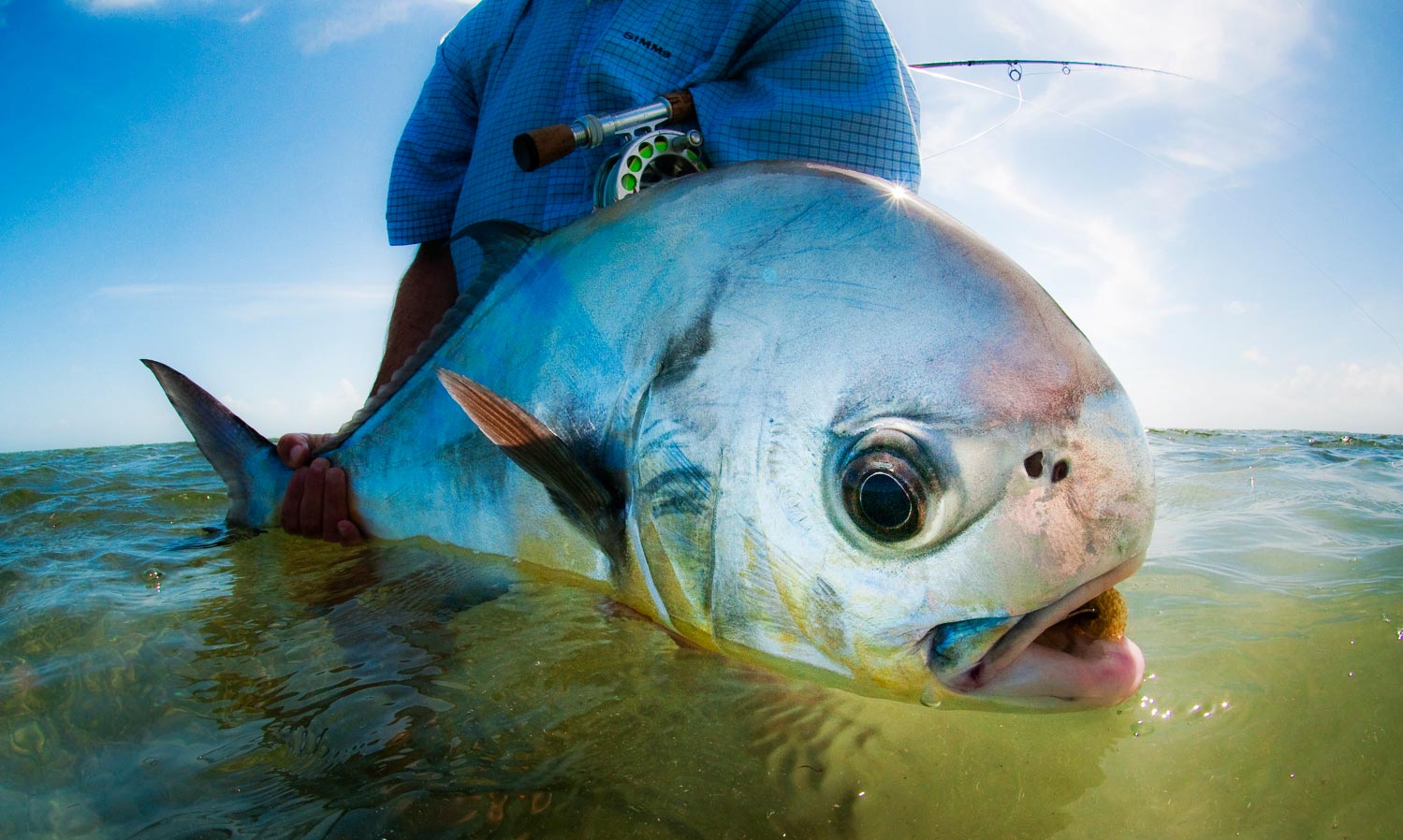
I AM NOT A MASTER PERMIT FISHERMAN. I THINK THAT’S EXACTLY THE THING I ENJOY ABOUT IT.
I like the challenge and if you’re looking for a challenge, permit have one for you. While I don’t consider myself an expert on the subject, I am learning and that puts me in a great position to share what I learn. Even if I am learning from my mistakes.
I had a great shot at a permit the other day and I totally screwed it up. Here’s what happened.
I was fishing with friends Joel Dickey and Rob Kramarz, both experienced flats guides. I was on the bow and we were fishing the early part of a falling tide. At twelve o’clock to the boat there was a cut in a small key and we anticipated that permit might be coming out with the tide.
As we poled slowly toward the mouth of the cut, I caught movement in my peripheral vision and turned to find a fish coming straight for the boat at two o’clock. It was an odd looking fish. Too light in color to be a permit and too dark to be a bonefish. As I struggled to identify it, the fish
Read More »Focus and Determination Make It Happen
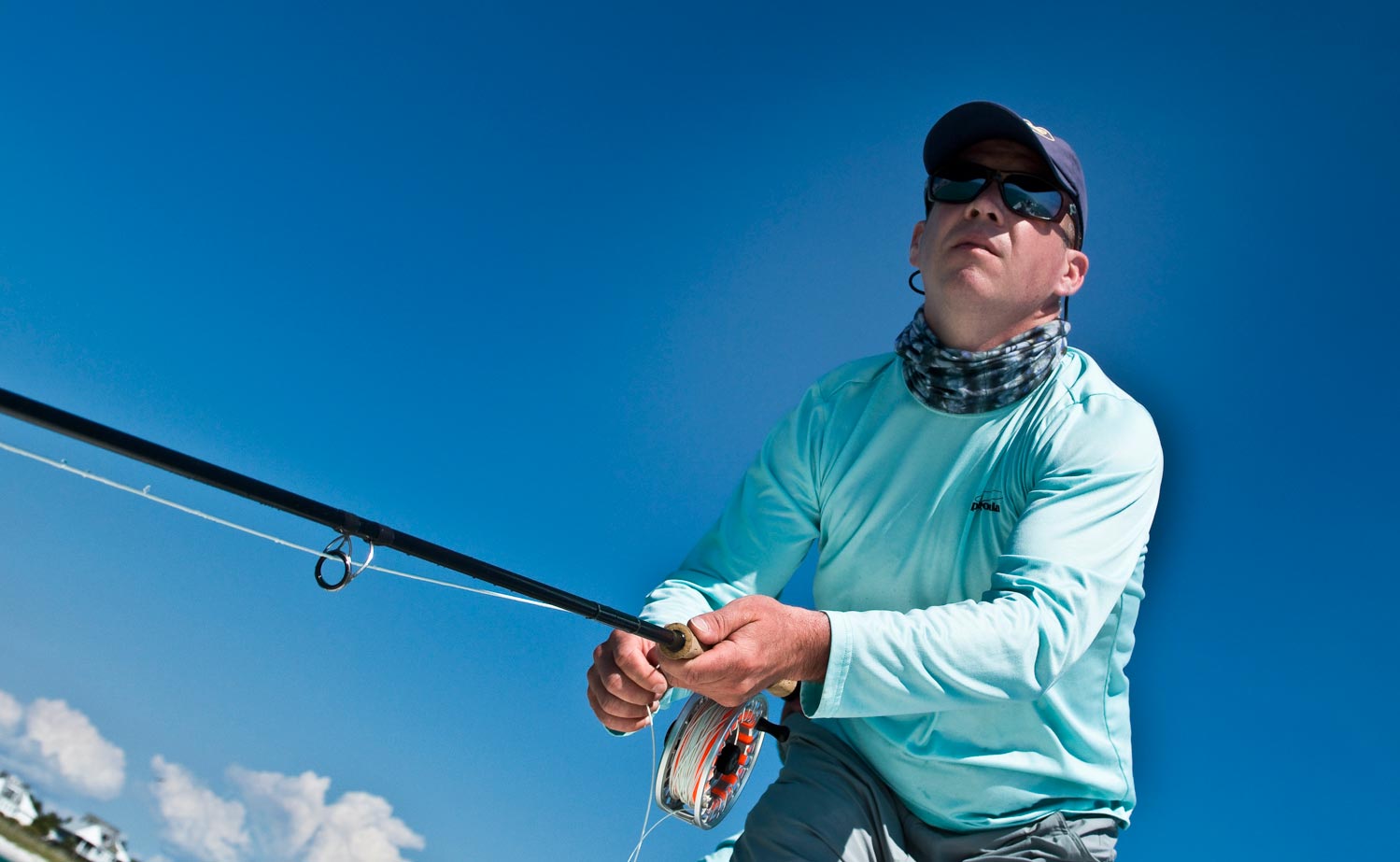
WHEN WAS THE LAST TIME YOU STARTED YOUR DAY WITH A KICK IN THE NUTS?
That’s exactly what happened to Mike Pyle the other day. For those of you who haven’t been following, I’ll give you a little background. Mike Pyle is a professional UFC fighter, fly fishing ninja and founder of Fish On Energy. G&G recently became one of his sponsors and it’s been really exciting being part of the team.
Mike had a tough fight on the card. Squaring off against a challenger eleven years younger than himself. I was fired up when I turned on Fox Sports and saw Mike with the flaming fish hook on his shorts. Mike’s technical fighting style was serving him well when, early in the first round, he took a knee in the groin. His young opponent was unbelievably strong and a good wrestler. It was clear that Mike had his work cut out for him.
Mike took a beating for most of that fight. It was only his skill and technique that kept him in the game. In spite of physical pain and a powerful opponent, he stayed focused and determined and in the last round turned the tables. The young challenger lost focus for an instant and Mike was there with the presence of mind to take advantage of it. Mike got him in a submission hold and almost ended the fight there.
In the end, his opponent broke the hold and won by a narrow decision. Regardless, I was impressed by Mike’s performance and proud to have my logo on his shorts. What’s more, I think he fought like an angler and there’s a lesson there for all of us.
The day after the fight I was telling Mike about a tarpon trip I went on recently. It felt a lot like that fight. Like a kick in the nuts in fact. Six of us went to fish Bocca Grande and found some of the most frustrating tarpon fishing I’ve ever encountered. We saw hundreds of fish but none that would eat.
The conditions were challenging. Very windy and, as we were fishing on the beach in heavy swells, it was a lot like bull riding. Waves crashing, some times knee high, over the bow. Time after time, I fought the wind and waves to made textbook presentations, only to see them refused. These fish were lock jawed and I couldn’t buy an eat.
After three days of that, it’s easy to lose your focus. To give up. To expect every fish not to eat. The funny thing about fly fishing, and a fight for that matter, is you tend to get what you expect. If you embrace the futility of the situation, your confidence is gone and it starts to show. It shows in sloppy presentations, half-hearted retrieve and lack of focus. I can tell you this from experience. If you don’t believe it’s going to happen, it isn’t.
You have to know there is a fish out there for you. You have to believe that every fish you see could be that fish. Every time you cast, you have to believe it’s going to happen. If you don’t believe in it, the fish damned sure will not.
Near the end of day three
Read More »Spey Casting With The Non-Dominant Hand on Top

By Jeff Hickman
SOMETIMES YOU LEARN SOMETHING VALUABLE COMPLEETLY BY ACCIDENT.
Last Summer I was on the phone with a good friend and regular client catching up. He was bummed to not be able to fish during his favorite Fall season due to a major shoulder surgery he had on his dominant right shoulder a few months previous. Extensive physical therapy was helping but he still had a lot of pain and his doctor suggested he hold off on fishing for several more months. Being the steelhead addict that he is, I knew that taking the season off would not be good for his mental health. So I told him to come out for a three day Deschutes camp trip and I would teach him to cast left handed which would give his right shoulder a much easier job.
He, like many guys that I fish with, had learned to Spey cast back in the days of the 14ft 9weight and Windcutter with unnecessary cheaters. This era of Spey fishing engrained many with a fast, erratic and borderline violent muscle memory. He had always struggled to sweep and cast slow enough for the modern short Scandinavian and Skagit heads to work properly. With his right hand on top, his fly needed frequent removal from the bushes behind him despite my nearly constant pleas for him to slow down.
So when he showed up for his trip he remained skeptical that he could learn to fish left handed or effectively fish without hurting his shoulder. But I made it very clear that he was to only fish left handed and he was not allowed to risk further injury by putting his right hand on top while casting. For backup, I claimed that his doctor had called me to make sure of this.
With no muscle memory with his left hand on top, I started my instruction from the ground up, walking him through the most important casting steps
Read More »Save Your Fingers Fly Fishing – Use Lycra Finger Sleeves
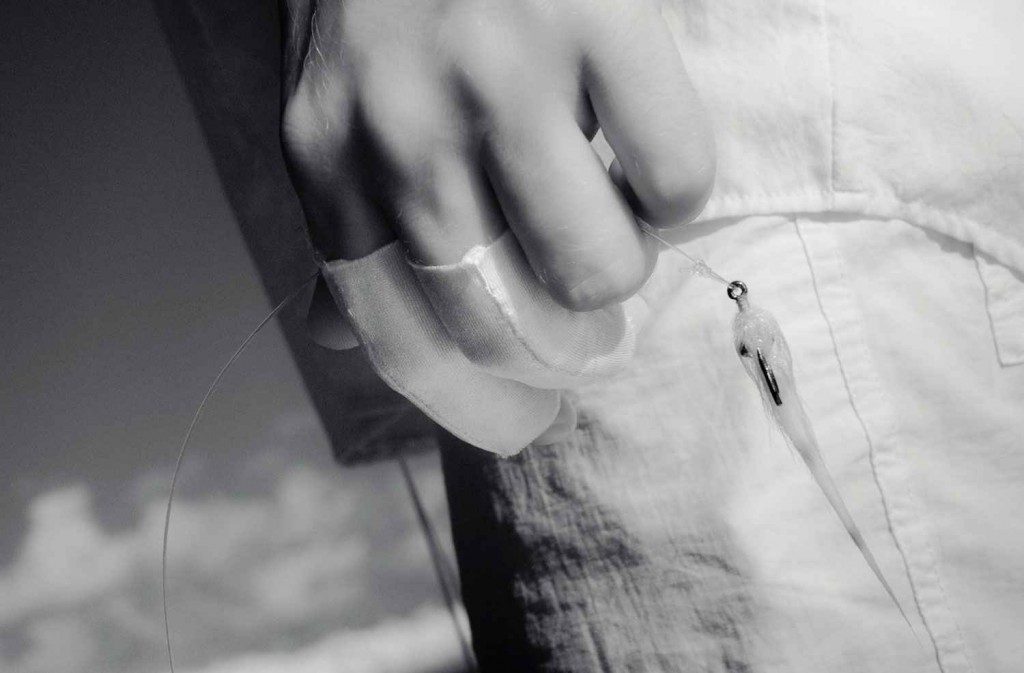
Today’s the day for a big fish.
It’s perfect streamer fishing conditions with overcast skies and there’s been lots of aggressive fish. I’m pounding the banks with my favorite streamer for thirty minutes when I notice the grit on my fly line is starting to agitate my fingers. The fly line feels like it’s coated in fine sandpaper from the silt and grit it’s picking up from the floorboard of the drift boat. I tough it out for another half hour, telling myself, be a man dude, but every fast paced jerk-strip retrieve has my fingers getting beat up even more. The fact that I’ve yet to land a fish only magnifies my discomfort. I’m willing to put up with the sore fingers if there’s a reward every once in a while but that’s not happening today, and I’m seriously considering yelling uncle and manning the oars.
Then there was my last saltwater fly fishing trip where I had botched two strip sets on tarpon back to back failing to get satisfactory hook penetration. My guide and partner both sighed in total disappointment, as I missed two perfect fish opportunities. I asked for forgiveness and promised them that my next eat would end in a perfect execution. An hour later my shot arrives. I present my fly, initiate my long slow strips, and my line comes tight as a big tarpon eats and turns away. I set the hook hard and hold on tight to my fly line. The hook buries but as the tarpon realizes it’s hooked, it screams off into the distance at full speed and rakes the fly line across my bare skin fingers. Instantly, I know I’m going to pay for holding onto the fly line too long, but I land the silverking beast, and it’s all worth it. After the victory cry, high fives, and adrenaline rush wears off, the throbbing sensation of chard fly line fingers begins. That’s when I silently ask myself the question, why didn’t you consider wearing finger protection dumbass?
Have you been in this situation before on the water? I’m thankful to admit it happens to me only on rare occasions these days. After scouring the web looking for a solution and talking with other fly anglers, I’m glad to inform everyone, I’ve found the perfect product that significantly eliminates finger chaffing. Ever heard of the fabric material Lycra? It’s basically a tight woven stretchy spandex material that can be sewn into finger sleeves that you can slide on and off with ease. They provide fantastic
Read More »